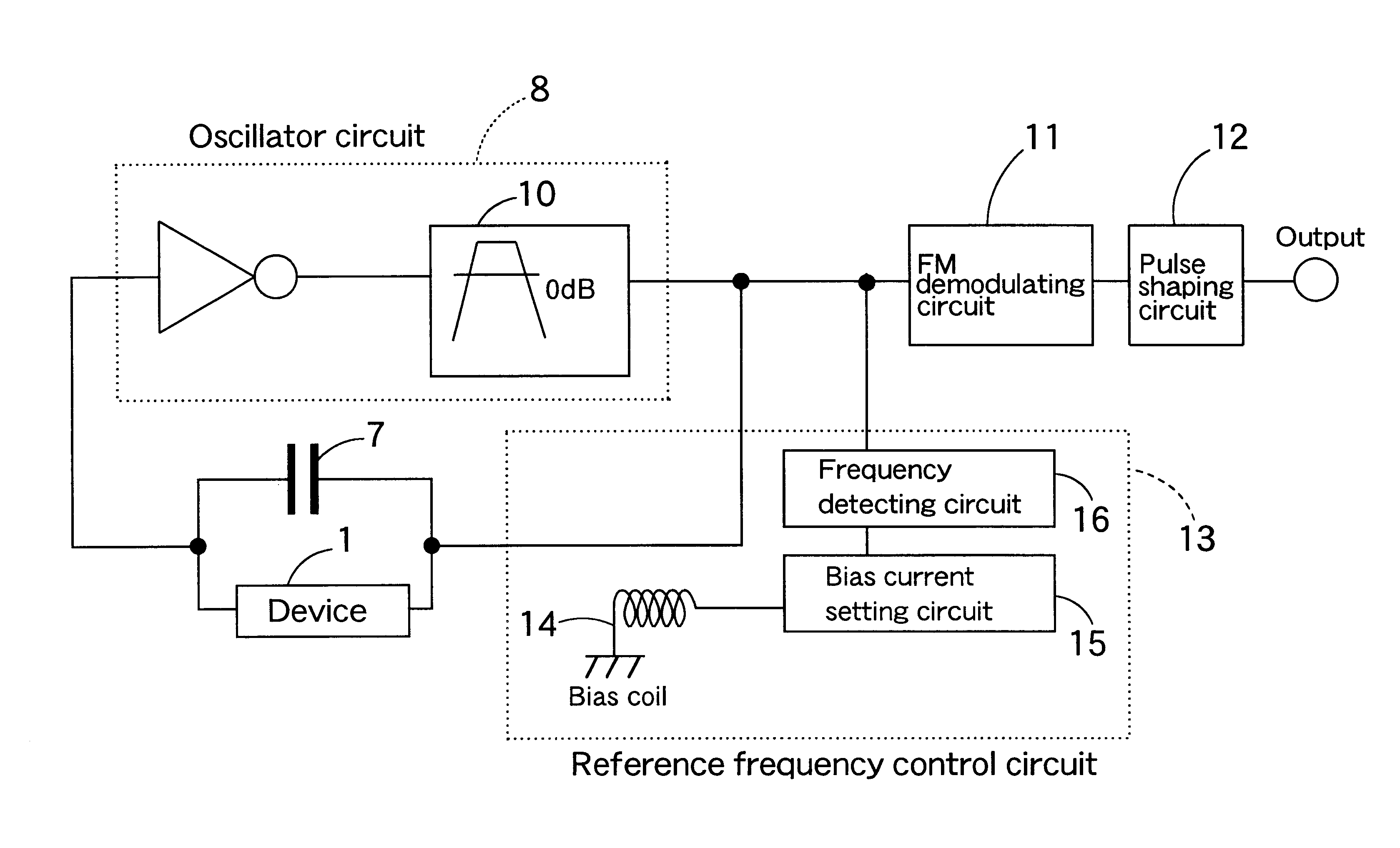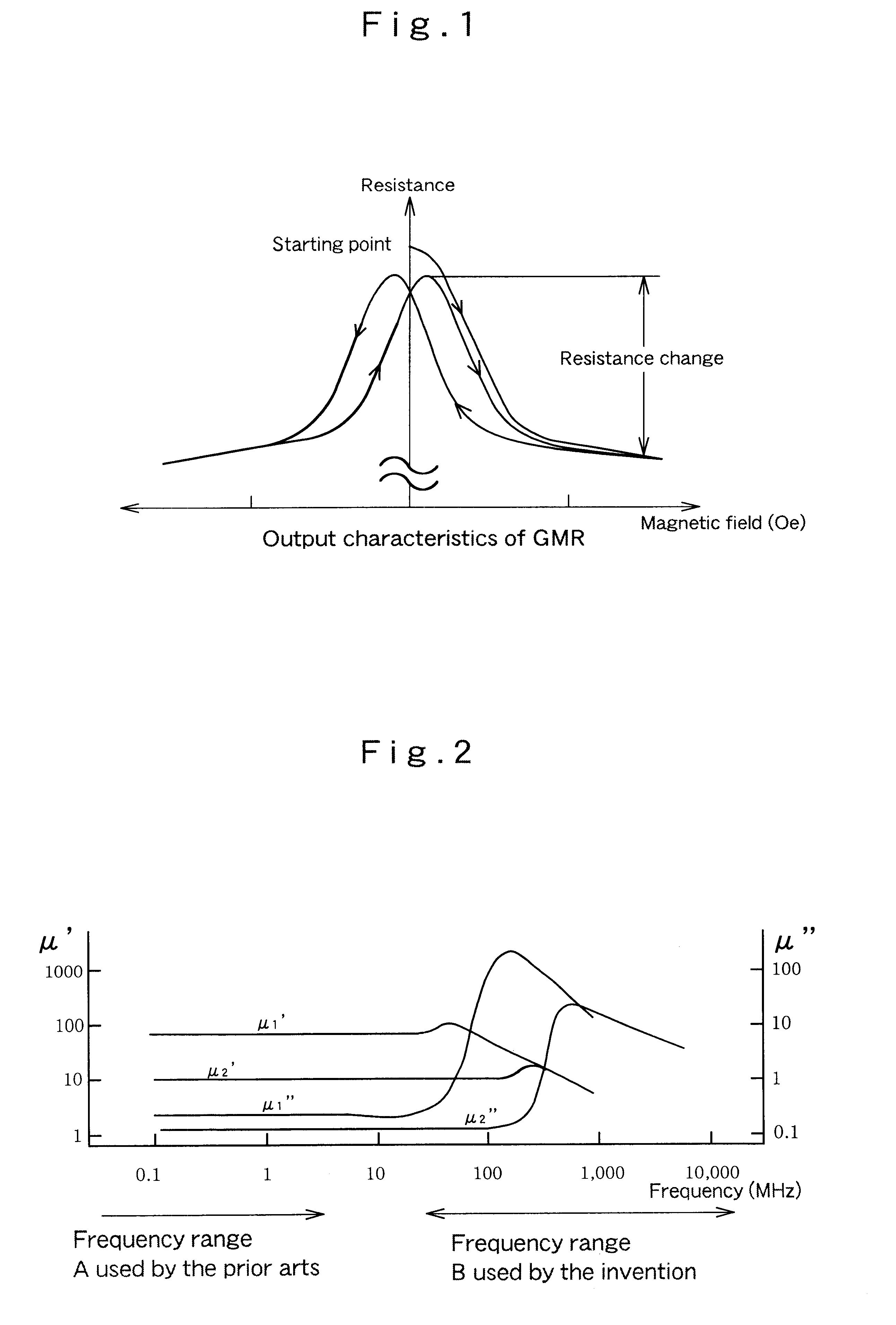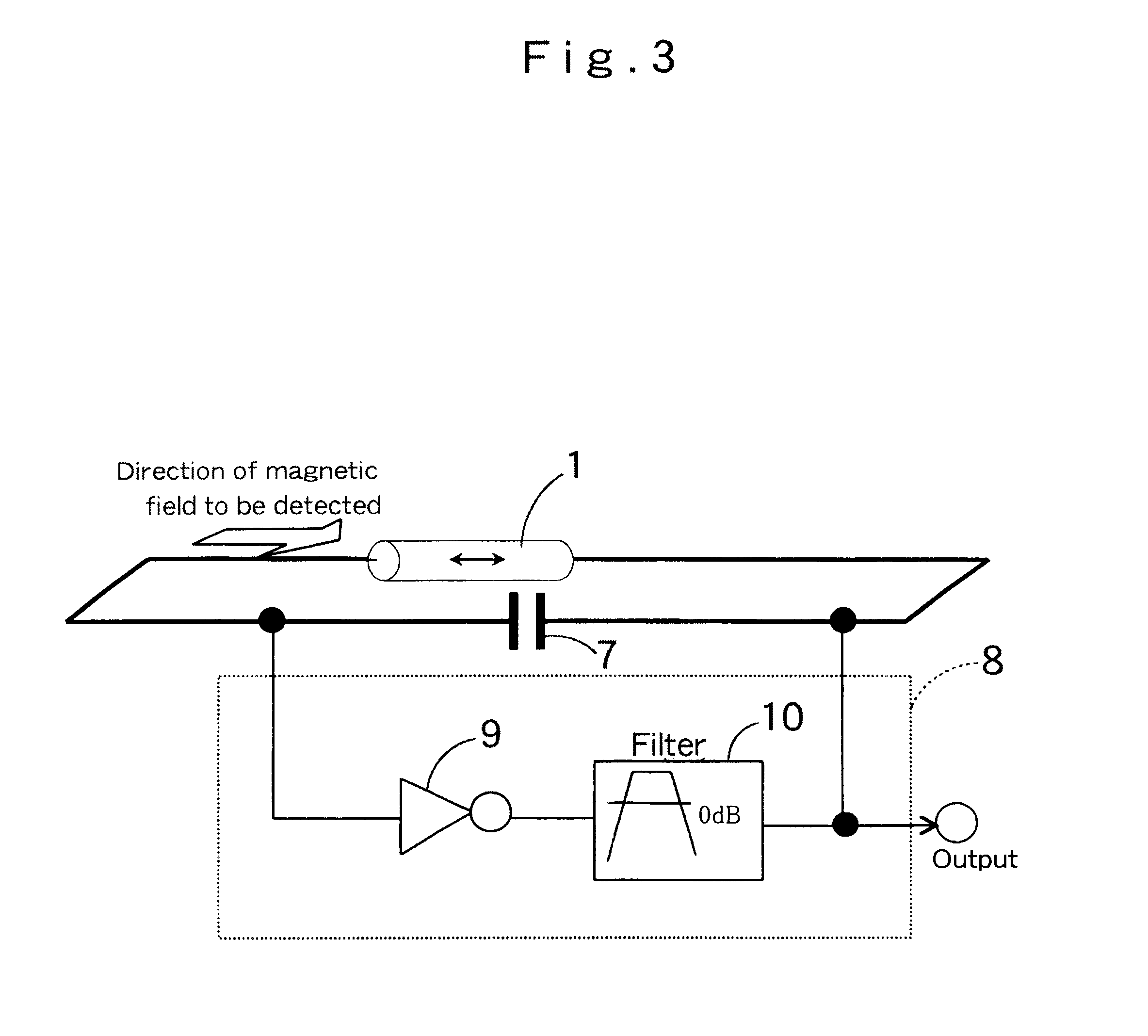Magnetic sensor device
a magnetic sensor and sensor technology, applied in the field of magnetic sensor devices, can solve the problems of gmr sensor being a sensor disadvantageous, no sensor can meet a request to the magnetic sensor, and reaching the limit of the capacity to keep and develop the part of the magnetic sensor
- Summary
- Abstract
- Description
- Claims
- Application Information
AI Technical Summary
Problems solved by technology
Method used
Image
Examples
second example
FIG. 24 shows a magnetic sensor device of a second example. In the second example, the above-described bias magnetic field generator device 36 and thin film magnetic sensor 31 are formed on the same semiconductor substrate (a silicon wafer) 39. A capacitor 47 to be connected to the thin film magnetic sensor 31, an oscillator circuit 48, and a reference frequency control circuit 43 to be connected to the bias magnetic field generator device 36 are also formed on the same semiconductor substrate 39. An FM demodulating circuit 44 to be connected to an output of the oscillator circuit 48, a pulse shaping circuit 42 to be connected to an output side of the FM demodulating circuit 44, and a bias current control circuit 45 which detects the frequency of the oscillator circuit 48 through a frequency detector current 41 and controls the bias magnetic field generator device 36 are also formed on the same semiconductor substrate 39. The devices and the circuits are connected through a conducti...
third example
FIG. 25 shows a magnetic sensor device of a third example. In the third example, a magnetic film 53 of a thin film magnetic sensor 51 is made to be a single-layer film, and the magnetic film 53 is mounted on a conductive layer 32 with an insulating layer 34 in between. As described above, a multilayer magnetic film can reduce a loss incident to high frequencies, but the single-layer magnetic film 53 can be used as long as the magnetic film can have a high magnetic resonance frequency through appropriate selection of a material of the magnetic film.
fourth example
FIG. 26 shows a magnetic sensor device of a fourth example. In the fourth example, a thin film magnetic sensor 51 has a structure in which a conductive layer 62 is sandwiched between insulating layers 65 and a magnetic film 63 is formed on a conductive layer 62 with the insulating layer 65 in between. This structure allows increasing the ratio of a reactance component of the magnetic sensor to a parasitic impedance, thereby making it easy that the oscillation conditions of the oscillator circuit hold.
PUM
 Login to View More
Login to View More Abstract
Description
Claims
Application Information
 Login to View More
Login to View More - R&D
- Intellectual Property
- Life Sciences
- Materials
- Tech Scout
- Unparalleled Data Quality
- Higher Quality Content
- 60% Fewer Hallucinations
Browse by: Latest US Patents, China's latest patents, Technical Efficacy Thesaurus, Application Domain, Technology Topic, Popular Technical Reports.
© 2025 PatSnap. All rights reserved.Legal|Privacy policy|Modern Slavery Act Transparency Statement|Sitemap|About US| Contact US: help@patsnap.com



